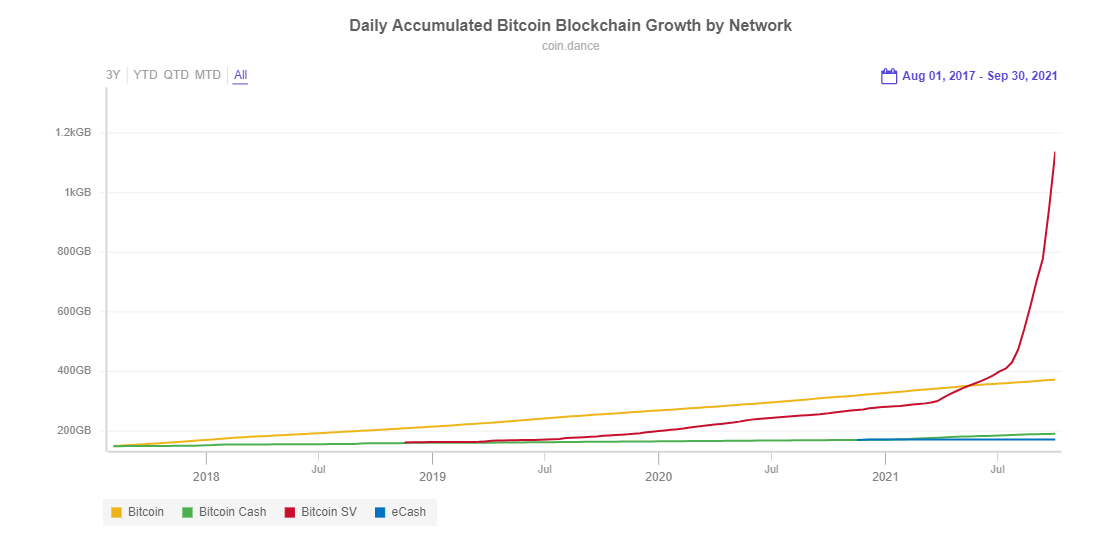What exactly does ‘Total Accumulated Bitcoin Blockchain Growth’ mean, & why is it important?
For starters: ‘Total Accumulated Bitcoin Blockchain Growth’ is essentially the total amount of data held in a blockchain.
Notice how the size of the BTC blockchain, represented by the yellow line in the graph, has grown at a relatively slow & consistent pace – this is due to the 1MB block size cap imposed on BTC. That 1MB limit stifles BTC blockchain growth by capping total amount of data that can be added to the chain at roughly 144MB / day.
On the contrary, the Bitcoin SV blockchain has no limit on block sizes, & as a result users have increasingly been storing more data on the BSV blockchain every day, using it as an immutable, distributed global data repository. Over the last several months use of BSV for storing data has increased significantly, proving there is demand for this type of distributed data storage solution. So much demand that BSV is currently averaging block sizes of over 200MB, and routinely processes blocks as big as 2GB – To make this more tangible, BSV processing 2GB over a 10 min window means that, in a single block, it processed the equivalent amount of data as BTC could process over roughly two weeks of working at full capacity.
Why is this important?
Fear of this sort of parabolic growth in utilization is the reason the BTC developers decided to throttle their network to the point where it can only process roughly 2 iPhone photos per hour in the first place. The decision to change the entire scope of the BTC roadmap was predicated on the assumption that this level of utilization would overwhelm the chain, causing it not to work. As BSV continues to process larger & larger amounts of data, that fundamental assumption of the BTC camp continues to be proven false time & time again.



